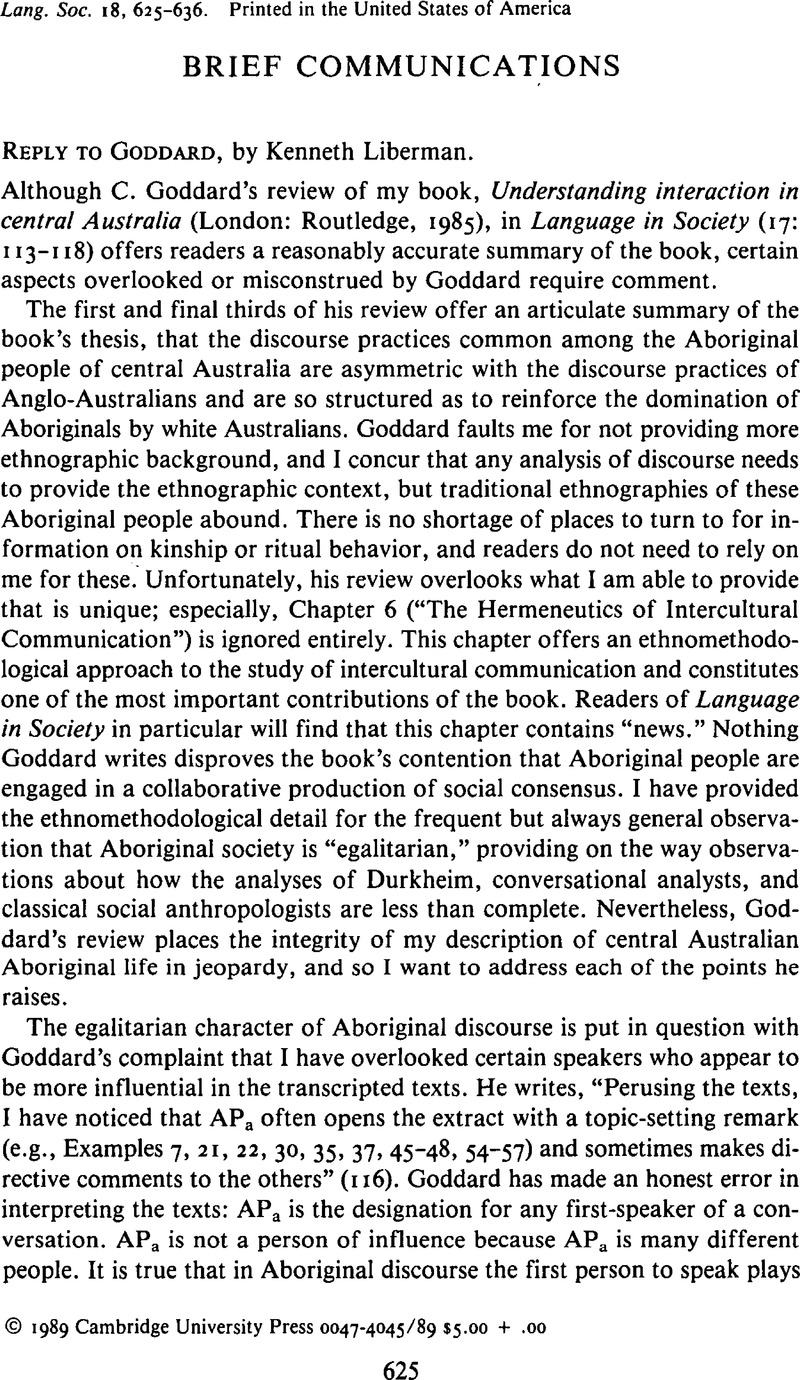No CrossRef data available.
Article contents
Brief communications
Published online by Cambridge University Press: 18 December 2008
Abstract
An abstract is not available for this content so a preview has been provided. Please use the Get access link above for information on how to access this content.

- Type
- Brief communications
- Information
- Copyright
- Copyright © Cambridge University Press 1989
References
REFERENCES
Liberman, K. (1985). Understanding interaction in central Australia: An ethnomethodology of Australian Aboriginal people. London: Routledge & Kegan Paul.Google Scholar
Sansom, B. (1980). The camp at Wallaby Cross. Canberra: Australian Institute of Aboriginal Studies.Google Scholar
Brown, P. & Levinson, S. (1978). Universals in language usage. Politeness phenomena. In Goody, E. (ed.), Questions and politeness: Strategies in social interaction. Cambridge: Cambridge University Press. (2nd ed., as separate book, 1987.)Google Scholar
Maynard, D. W. (1985). How children start arguments. Language in Society 14:1–29.CrossRefGoogle Scholar
Smit, D., ter Berg, T. & van der Weide, J. (1989). Confrontatie tijdens het spelen, Een onderrzoek naar de wijze waarop 11-jarigue kinderen omgaan met confrontaties tijdens hun spel. Tijdschrift voor Taalbeheersing 11(2).Google Scholar
van Eemeren, F. H. & Grootendorst, R. (1982). Speech acts in argumentative discussions. Dordrecht.Google Scholar


